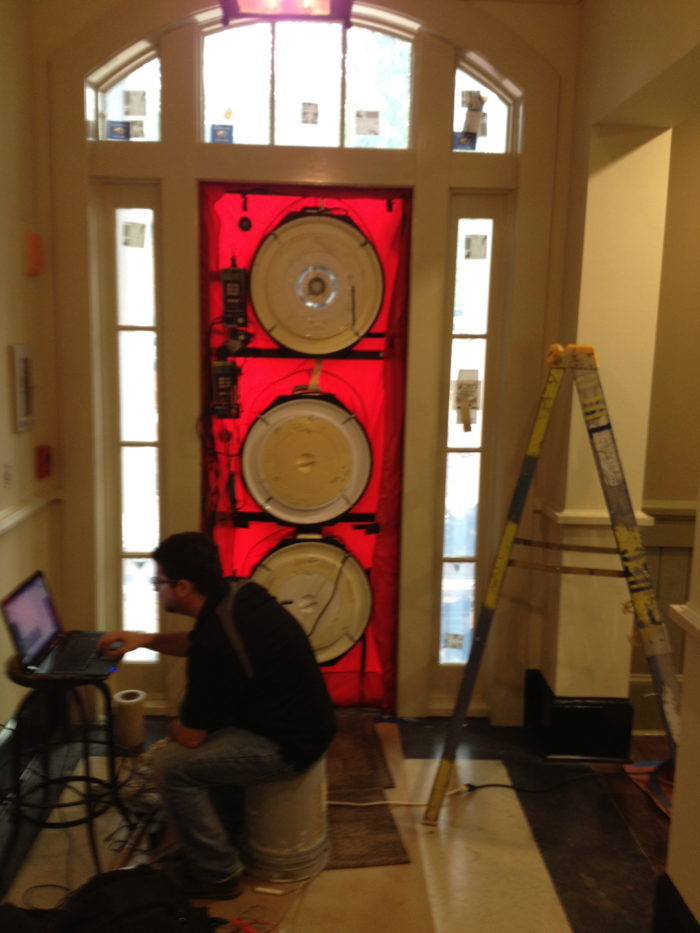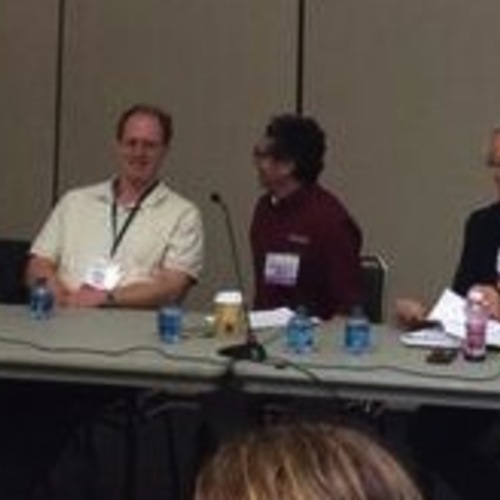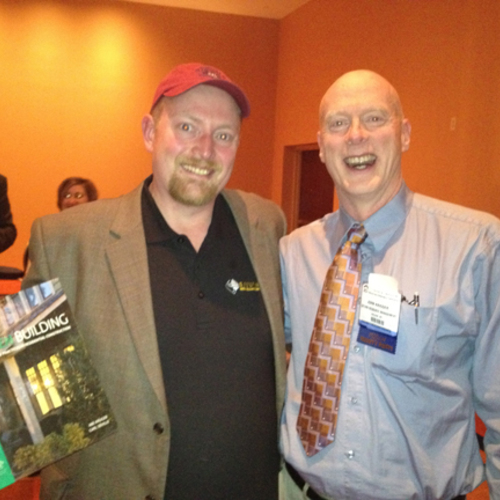
The 2013 ACI National Home Performance Conference, called Affordable Comfort until a few years back when the conference was renamed ACI, recently took place in Denver, Colorado. This year, the conference came complete with about six inches of snow in May — quite a shock for a transplanted Southerner.
With over 180 individual sessions and workshops to choose from, ACI is a daunting event, taxing the capacity of the geekiest energy nerds to maintain focus throughout the four long days of the conference. As with most events, the quality of presenters and presentations vary greatly, with some of the best sessions being poorly attended, and other, lesser quality talks resembling a game of sardines.
Of arguably equal or greater value than the educational sessions is the networking with like-minded energy professionals, ranging from dinner and drinks to late-night carousing at various events (if you were lucky enough to find them).
A few sessions that I found particularly interesting, in addition to the one on air flow testing I discussed in my last post, covered blower-door testing of multifamily buildings, HVAC quality control programs in development by the EPA, supplemental dehumidification systems, and an evening of Pecha Kucha talks.
Using a blower door to test a multifamily building
The session on multifamily blower-door testing addressed whole-building testing using multiple fans connected (either by cables or wirelessly) to a computer running software that controls the entire setup and records pressure and flows automatically.
Since I have done this before myself, it was a good refresher course, and much easier to follow than it would have been if I hadn’t already had the experience. Probably the best tip I picked up was the suggestion to use a duct fan instead of a blower-door fan to test individual apartment leakage – it will usually provide enough pressure to get a good airflow reading and it’s much lighter to lug around from door to door.
HVAC quality control
An EPA session on HVAC quality control ended up being a series of complaints about the poor state of the industry.
Following an overview of a 5-year old ENERGY STAR HVAC Quality Installation (QI) program, we learned that to date only 2,500 installations have been completed under its auspices. Comparing this to another statistic provided – 11,000 HVAC equipment swap-outs occur every day – it is clear that implementation of the HVAC Quality Installation program has a long way to go.
Dehumidification
The presentation on supplemental dehumidification was of particular interest to me. I am always looking for good ideas for my mixed humid climate, where bridge seasons require little heating or cooling but can create problems with excessive humidity in high performance homes.
Armin Rudd of the Building Science Corp. and Srikanth Puttagunta of Steven Winter Associates shared this session that proved to be quite informative as well as densely packed with data from an extensive study of the subject. Armin’s section was based on a study he has been working on for several years, ASHRAE 1449, that analyzed ventilation, heating, cooling, and dehumidification in both homes and models in several climates.
I have to admit that I got a little lost in the details, but I did leave with two key points that resonated with me. First was the point that in humid climates, ERVs can actually increase the moisture level in a home when the relative humidity outside is higher than inside. This only reinforces concerns I have expressed previously on the real value of ERVs in moderate climates.
The second was that dehumidifiers that also provide outside air can also increase the indoor relative humidity due to the fact that the condenser turns off when the humidity reaches the desired level, but outside air can continue to flow through the unit where water in the coil and pan can recharge it with moisture, rehumidifying the house. Although dehumidifiers are highly recommended in humid climates, the point was made in this session that whole-house ventilation should be provide by a separate system for best performance.
Pecha Kucha
Finally, a group called the Trainers Consortium — a collection of almost too many smart building geeks — offered up a group of Pecha Kucha presentations, each consisting of 20 slides with a 20 second timer on each, for a total of six minutes and 40 seconds per presentation.
MOOCs (Massive Open Online Courses) were mentioned by several speakers as the method of choice for distributing training in the weatherization community. I have yet to MOOC myself, but expect that I will do so fairly soon.
An undocumented dance performance
The highlight of this evening session was J West and Amanda Evans’ excellent rendition of the New Zealand All Black Rugby Team Haka War Dance. I had hoped to include video of their performance, but unfortunately it wasn’t available. We’ll have to do a better job documenting it next year.
As in past years attending ACI, I learned some good things, was frustrated by the number of competing sessions I wanted to attend, and attended some talks that did not meet my expectations. In general it was a worthwhile event that I will attend again.
Weekly Newsletter
Get building science and energy efficiency advice, plus special offers, in your inbox.















12 Comments
TMA
Too many acronyms already!
carl and matthew, you can
carl and matthew, you can relax because those are not acronyms, they are initialisms. in short, acronyms are pronounced phonetically like a word, think NASA or NATO. initialisms, however, have each letter enunciated, like CIA or NHL. my philosophy of logic degree has finally reaped huge dividends on GBA....
Response to Erik OIofsson
Erik,
In Australia, GBA is an acronym, not an initialism. It is pronounced the same way as a common Australian word -- it's the word you say when you take leave of your friends: "Gba, mate."
Thank you, Erik!
I think George Carlin was probably the most vociferous about this misuse of the word 'acronym,' but I recently published a list of acronyms and initials (or initialisms, as you call them) in our blog. You can find my distinction between the terms in a footnote. My full list is up to 133 now, and you can get it here:
107 Acronyms & Initials for Home Energy Pros.
np, allison, lol! btw, fwiw,
np, allison, lol! btw, fwiw, i was jj. kk, ttyl
Glad you gentlemen are having so much fun
Too bad no one has any time to comment on the content of my post.
Response to Carl Seville
Carl,
Great blog. I appreciate your sharing the tip about using a Duct Blaster fan instead of a blower-door fan to test envelope leakage at small, tight homes or apartments. And it's good to emphasize the important information that ERVs can't provide any miracles in a humid climate. (More here: HRV or ERV?.)
And you're doing a great job maintaining your public image as a curmudgeon, with your important reprimands to those of us who are having too much fun...
Hi Carl--nice column! Just a
Hi Carl--nice column! Just a quick item:
I have to *represent* for the home team, and note that Armin Rudd is part of Building Science Corporation. :) The link for Armin works just fine though.
Response to Kohta Ueno
Kohta,
Thanks for the clarification. I have edited Carl's blog to reflect your correction.
RE: Armin Rudd
Kohta - thanks for pointing out that bit of misdirection - I was just about to correct it when I saw that Martin did it for me. I suppose I could blame it on my belief that everyone knows who Armin is and he doesn't need any introduction. Then again, I can delude myself into thinking it is the result of sloppy editing, so I can deflect responsibility to someone else. In any case, glad it is corrected.
Regarding ventilating dehumidifiers
Although it is possible for the water remaining in the dehumidifier evaporator coil following a dehumidification cycle to re-evaporate into the (dehumidifier) supply air I would like make a few points.
Many whole house dehumidifiers have a "wet" coil that is much smaller than the AC system indoor coil. The amount of water remaining on the whole house dehumidifier coil is significantly less than the amount of water that remains on a typical AC indoor coil following a cooling cycle.
The whole house dehumidifier will respond to high humidity in a house by dehumidifying the (dehumidifier) supply air thus reducing the humidity level in the house. If the humidity level in a house increases (for any reason including water evaporating from a wet cooling or dehumidifier coil) the dehumidifier will operate to reduce it to the desired humidity level. Most AC systems only respond to temperature changes and not to humidity changes. Most other ventilation systems do not provide active dehumidification.
Many whole house dehumidifiers incorporate a fan that requires less than 100W to supply filtered outdoor ventilation air mixed with return air from the house. This is significantly less energy intensive that operating most air handler fans to provide ventilation.
dehumidifier efficiency
> whole-house ventilation should be provide by a separate system for best performance
I'd like to see discussion of the efficiency of a dehumidifier when the source air is the most humid air available (direct from outside) vs inside air (already mostly dehumidified). Certainly air conditioner efficiency benefits from being fed the hottest available air.
Log in or create an account to post a comment.
Sign up Log in